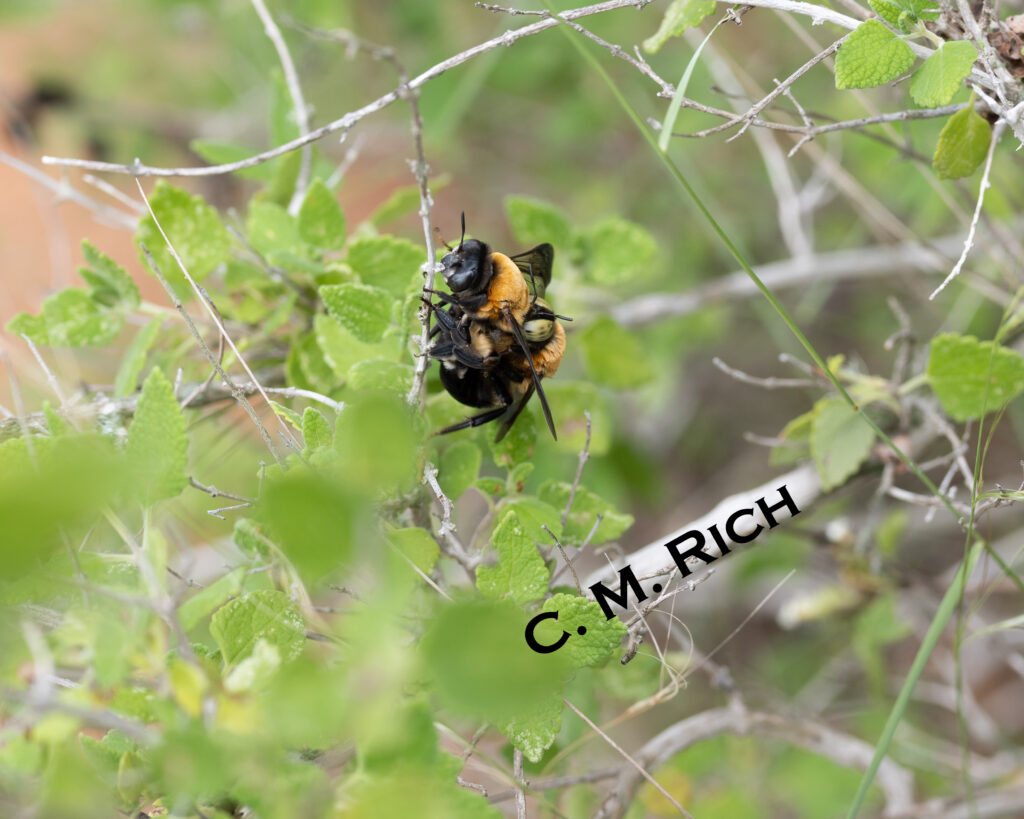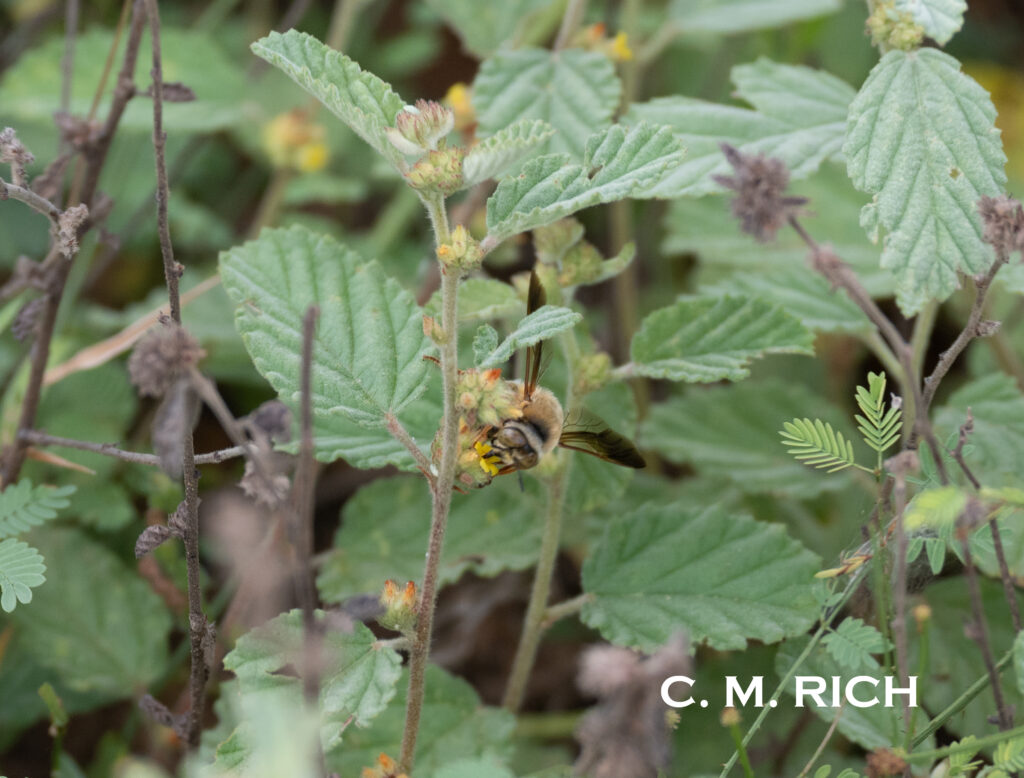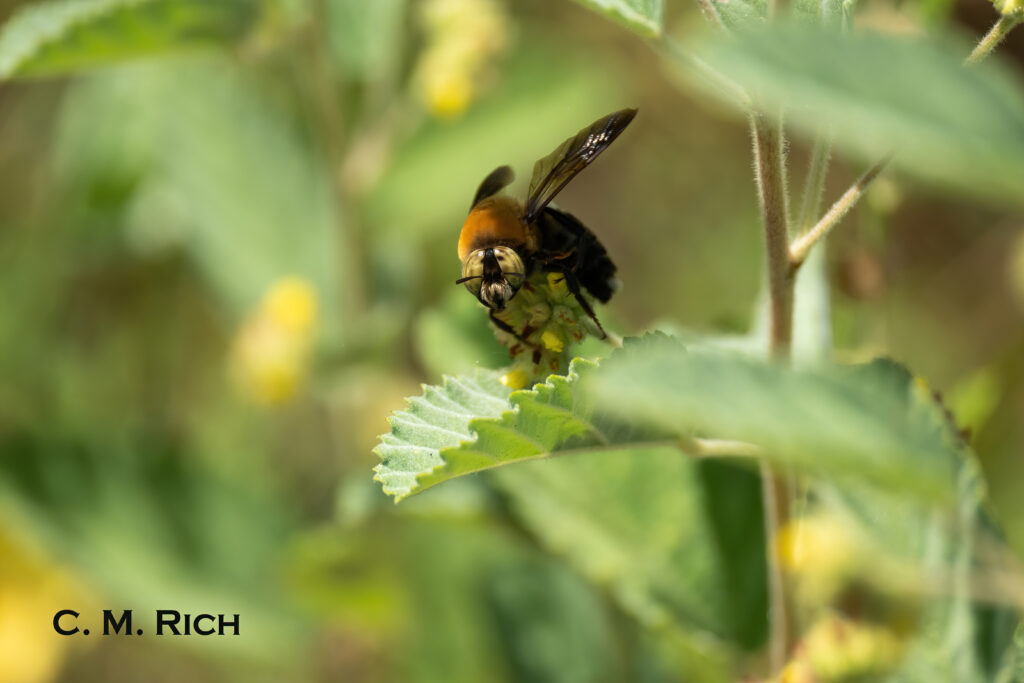by C. M. Rich, Texas Master Naturalist
When I first encountered these two rare bees, they were in flight.
In fact, they flew right in front of me, and I almost ran into them.
I was confused as to what I was seeing.
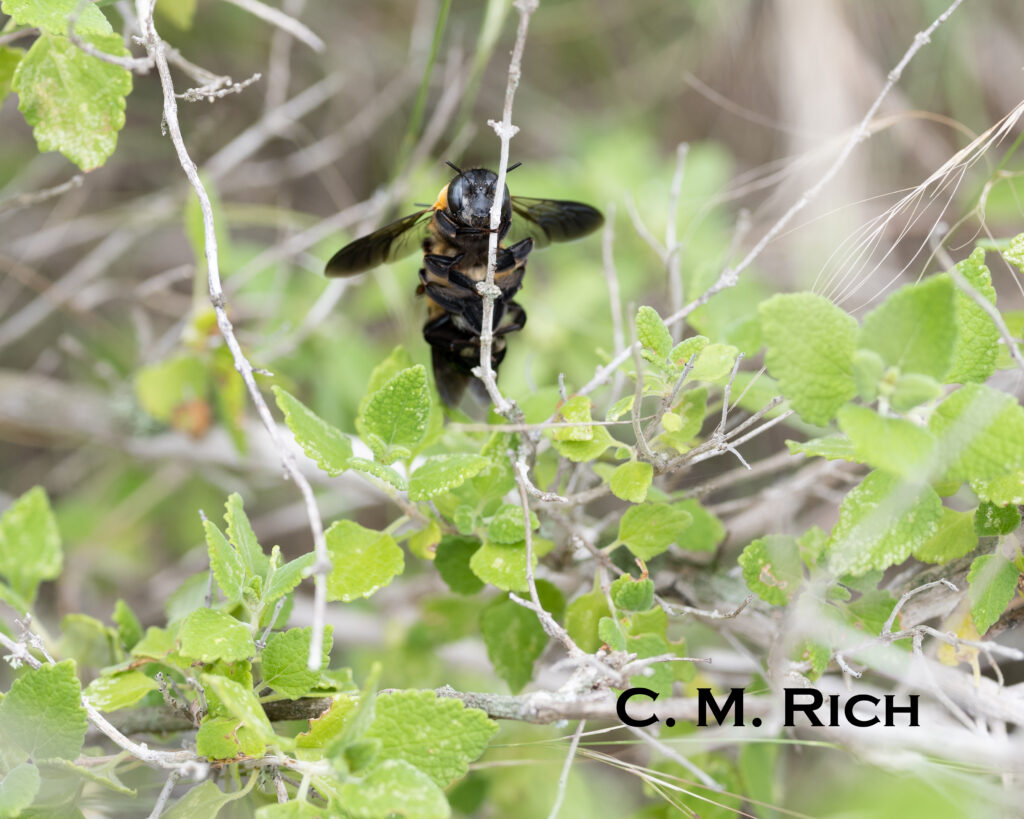
Initially, these two rare bees appeared to be a very long insect flying about three (3) feet above the ground.
It took me a few seconds to realize that this “really long insect” I had nearly bumped into was actual two Mesoxaea texana—conjoined—while in flight.
The Texas native plant these two Mesoxaea texana alighted on was a Salvia ballotiflora, also known as Shrubby Blue Sage.
By the way, this plant has been observed to be a favorite nectar and pollen source for them.
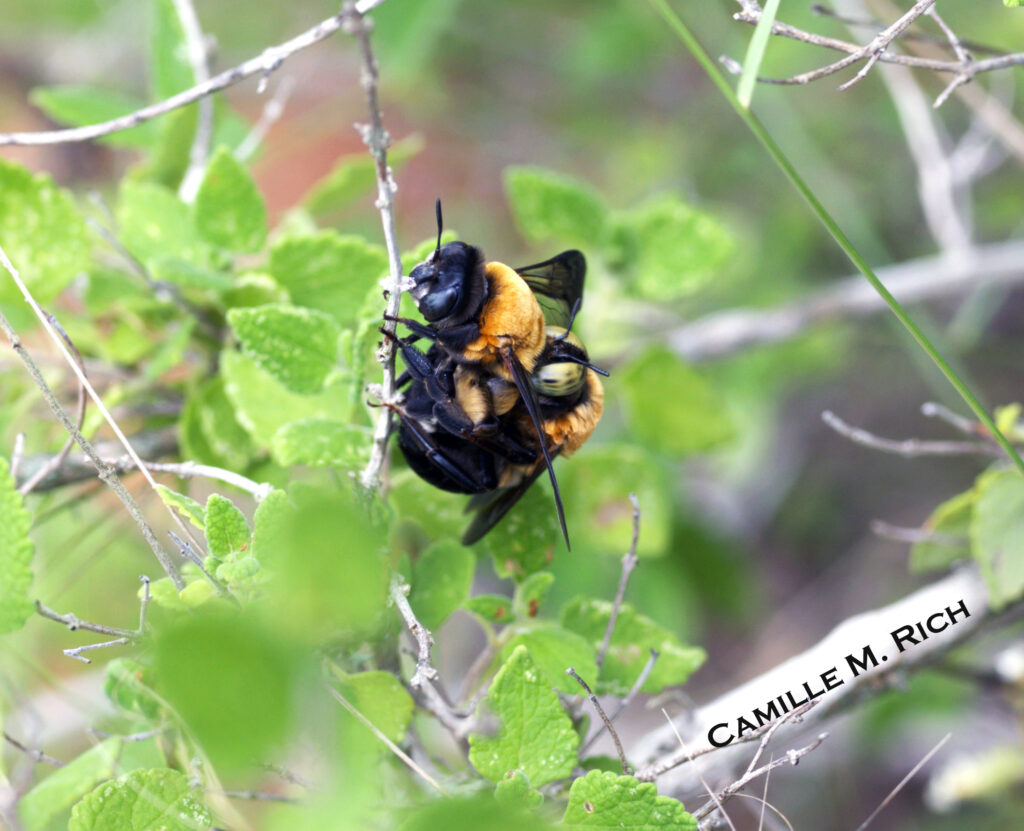
These two remained conjoined for quite some time.
Rough estimates, based on the metadata for all images and videos taken that day, suggest that they were in this state for approximately several minutes.
I have been stewarding this land for these bees since the Fall of 2020.
Their watch, care, and preservation has turned into one of the main “Passion Projects” of this chapter of my life.
Stay tuned. There is definitely more to come.
Thanks for your time!
- Mesoxaea texana update from the South Texas Sand Sheet, and guess what? The Protoxaea gloriosa are back!!!!!!!
- “Male Mesoxaea texana on the South Texas Sand Sheet”
- “Female Mesoxaea texana on the South Texas Sand Sheet”
- “Making more Mesoxaea texana on the South Texas Sand Sheet”
- “Mesoxaea texana nectaring on Waltheria indica on the South Texas Sand Sheet!”
- May 2025
- October 2024
- September 2024
- August 2024
- May 2024
- March 2024
- December 2023
- September 2023
- August 2023
- June 2023
- May 2023
- November 2022
- November 2021
- August 2021
- February 2021
- September 2020
- June 2020
- May 2020
- March 2020
- February 2020
- October 2019
- September 2019
- August 2019
- June 2019
- May 2019
- April 2019
- March 2019
- February 2019
- January 2019
- December 2018

